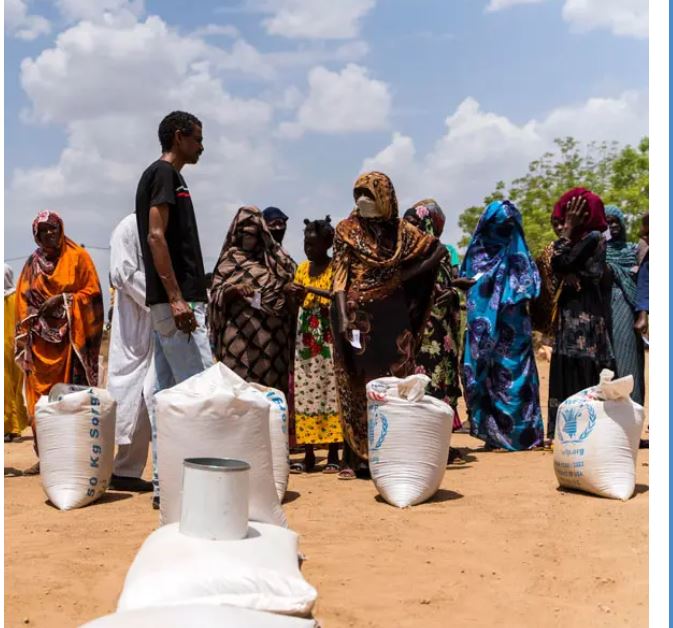The Sudanese Armed Forces (SAF) and the Rapid Support Forces (RSF) have been engaged in a protracted conflict for the past five months, leading to the displacement of approximately 5.3 million people within Sudan and neighboring countries, according to recent reports.
Within Sudan itself, more than 4.2 million people have been forced to flee their homes, seeking refuge in 3,929 locations across all 18 states. The International Organization for Migration Displacement Tracking Matrix (IOM DTM) Weekly Displacement Snapshot reveals that over 114,700 people were displaced in just the past week. The most affected states include River Nile, South Darfur, East Darfur, Northern, Sennar, and North Darfur. Notably, 69% of those displaced are originally from Khartoum, and the majority have sought shelter with host communities or in rented accommodations in urban areas.
Additionally, over 1 million people have crossed into neighboring countries, such as the Central African Republic, Chad, Egypt, Ethiopia, and South Sudan, in search of safety, according to the UN Refugee Agency (UNHCR).
The Commissioner-General for Humanitarian Aid Commission (HAC), Najm Ad-Dein Musa Abdel Karim, has extended the registration of national and international NGOs until 31 March 2024, allowing them to continue their critical work in the face of challenging security conditions.
However, the situation remains dire, with more than 50 humanitarian and human rights organizations urgently calling for increased assistance, protection, solidarity, and attention to the Sudan crisis. In a joint statement, these organizations warn that Sudan is no longer on the brink of mass atrocities but has already descended into a crisis. The UN-led humanitarian appeal is severely underfunded, with only 31% of the required funds secured, hampering efforts to deliver aid safely.
Measles has also emerged as a major health concern, with over 1,000 new suspected cases reported last week alone, bringing the total number of cases across Sudan to 4,334 since April 2023. Tragically, more than 1,200 refugee children have lost their lives in White Nile State due to suspected measles and underlying malnutrition, according to reports from UNHCR.
Heavy rains and flooding further compound the crisis, affecting 72,400 people across 16 localities in seven states. The most severely impacted states include Northern, River Nile, and North Darfur.
Despite these challenges, humanitarian organizations are working tirelessly to provide assistance. UN agencies and partners have delivered food supplies, medical aid, and other essential items to various locations, but access to those in need remains challenging due to ongoing hostilities and violence against humanitarian personnel.
The situation continues to evolve rapidly, and the international community is urged to step up its support to address the escalating humanitarian crisis in Sudan.
The revised 2023 Sudan Humanitarian Response Plan (HRP) requires $2.6 billion to provide life-saving multi-sectoral assistance and protection services to 18.1 million people through the end of this year. As of 22 September, only 31.4% of this funding has been secured.
The situation in Sudan is a matter of grave concern, and concerted international efforts are needed to alleviate the suffering of millions affected by this crisis.
A global media for the latest news, entertainment, music fashion, and more.





